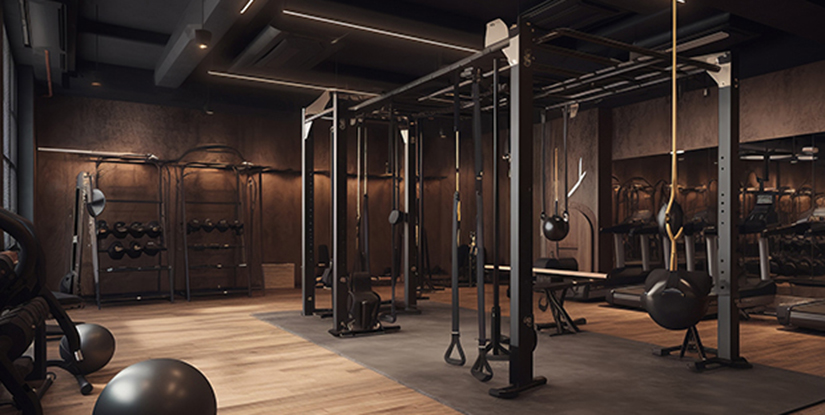Fitness Equipment Types: Cardio, Strength & Functional Guide

Overview of Fitness Equipment Types
Selecting the right fitness equipment is a critical step for creating a safe, efficient and sustainable exercise routine. Equipment choices should reflect training goals, available space, budget and safety considerations. This guide outlines core categories—cardio, strength, functional training, accessories and recovery—providing a practical foundation for professionals and consumers who seek a structured approach to equipment selection.
Cardio Equipment
Cardiovascular machines improve aerobic capacity, support weight management, and enhance metabolic health. Common cardio equipment includes:
- Treadmills: Versatile for walking, jogging and sprint intervals; consider motor power, belt length and cushioning.
- Stationary Bikes: Upright and recumbent options for low-impact training; spin bikes suit high-intensity intervals.
- Ellipticals: Low-impact full-body movement that reduces joint stress while providing variable resistance.
- Rowing Machines: High-efficiency, full-body cardio with strength elements; ideal for calibrated power output training.
- Stair Climbers and Steppers: Target glute and lower-body muscular endurance; often used for interval circuits.
Strength Training Equipment
Strength equipment develops muscular strength, hypertrophy and functional resilience. Equipment selections vary by specificity, safety and space.
- Free Weights: Dumbbells, barbells and adjustable sets provide unparalleled versatility and progressive overload.
- Weight Machines: Plate-loaded and selectorized machines isolate muscles and offer controlled movement patterns.
- Kettlebells: Excellent for power, stability and dynamic movement patterns such as swings and Turkish get-ups.
- Cable Systems: Provide constant tension and a wide range of angles for functional strength training.
- Resistance Bands: Lightweight, portable and scalable for rehabilitation, activation and travel workouts.
Functional and Performance Equipment
Functional equipment enhances movement quality, core stability and sport-specific capacities. It bridges strength and conditioning with transferable real-world performance.
- TRX and Suspension Trainers: Use bodyweight to build stability, balance and strength across movement chains.
- Medicine Balls and Slam Balls: Useful for explosive power, rotational training and conditioning circuits.
- Battle Ropes: Develop upper-body power and metabolic conditioning while minimizing impact.
- Sandbags and Weighted Sleds: Provide variable resistance for functional, multi-planar training.
- Plyometric Boxes: Facilitate jump training and reactive strength development.
Accessories and Recovery Tools
Accessories enhance workout safety, comfort and recovery, and they are essential in both professional and home environments.
- Gym Mats and Flooring: Protect joints and equipment, reduce noise and improve traction.
- Foam Rollers and Massage Tools: Support myofascial release and expedite recovery between sessions.
- Heart Rate Monitors and Wearables: Provide objective data for intensity control and progress tracking.
- Lifting Belts, Straps and Gloves: Improve stability and grip for heavy lifts but should be used judiciously.
- Portable Trainers: Mini-bands, sliders and agility ladders add variety without large space requirements.
Choosing Equipment: Key Considerations
Selecting equipment requires a balance of goals, biomechanics, space, budget and long-term utility.
- Training Goals: Prioritize cardio machines for endurance, free weights for strength, and functional tools for mobility and agility.
- Space and Layout: Measure available area; foldable or compact options are preferable for limited spaces.
- Budget and ROI: Invest in durable items for frequent use; consider refurbished commercial equipment for cost-efficiency.
- Versatility: Multi-functional equipment delivers broader programming options and better value per square foot.
- Safety and Maintenance: Check warranties, serviceability and user weight limits to ensure longevity and safe operation.
Maintenance and Safety
Regular maintenance and adherence to safety protocols preserve equipment function and minimize injury risk. Implement routine inspections, clean contact surfaces, lubricate moving parts and replace worn elements such as belts and cables. Train users on proper form, settings and emergency stop procedures for cardio machines. For strength equipment, maintain clear zones and secure weights when not in use.
Purchasing Tips
When buying equipment, test models where possible, verify warranty coverage and request service records for used items. Prioritize certifications from recognized bodies for commercial purchases and ensure compatibility with facility electrical standards. For home gyms, prioritize multi-purpose items that align with your primary training goals.
Conclusion
Understanding fitness equipment types enables informed decisions that align with training objectives, spatial constraints and budget. A balanced mix of cardio, strength and functional tools—combined with appropriate accessories and recovery protocols—creates a resilient, effective training environment for both individuals and facilities.
FAQs
1. What is the best equipment for beginners?
Start with basic cardio (bike or treadmill), adjustable dumbbells, resistance bands and a mat to build consistency and foundational strength.
2. How much space is needed for a home gym?
A compact setup fits in 20-50 sq ft; a more comprehensive gym may require 100+ sq ft depending on equipment size.
3. Are machines safer than free weights?
Machines guide movement and reduce stabilization demands, which can lower injury risk for some users, but free weights develop functional strength and coordination.
4. How often should equipment be serviced?
Follow manufacturer guidelines; high-use commercial machines benefit from monthly inspections and annual professional servicing.
5. What equipment is best for weight loss?
Combine cardio machines for calorie burn with strength training (free weights) to increase metabolic rate and preserve lean mass.
6. Can resistance bands replace weights?
Resistance bands are effective for many goals, especially rehab and activation, but heavy loads from free weights are superior for maximal strength gains.
7. How to choose between a treadmill and a rowing machine?
Choose a treadmill for running-specific goals and rowing for low-impact, full-body conditioning and power development.
8. Is second-hand equipment worth buying?
Used equipment can offer value if inspected for wear, function and safety; prefer reputable sellers with return policies.
9. What recovery tools are most effective?
Foam rollers, massage tools and compression garments support recovery; combine with adequate sleep and nutrition for best results.

